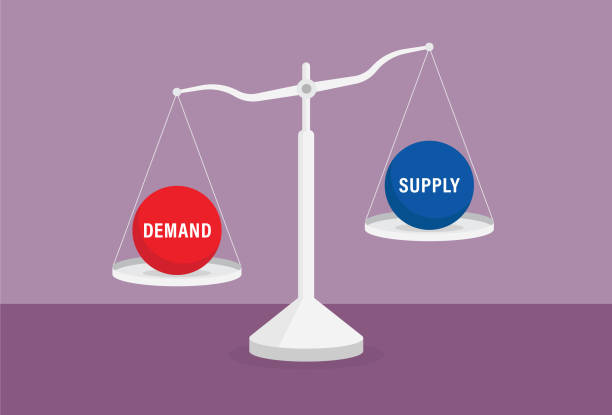
What are some of the key trends and factors to keep an eye on throughout 2022?
7 factors driving the real estate market in 2022
After the once-in-a-generation boom seen in 2021, a lot has started to shift moving into the new year.
Banks and economists alike are forecasting a significantly slower rate of price growth across the Australian property market, but even so, it’s looking likely that there are further gains to come.
So, what are some of the key trends and factors to keep an eye on throughout 2022?
Whether you’re a seller, buyer or investor, read on to find out what’s in store.

Affordability pressures are slowing growth
National property price totalled a remarkable +22.1 per cent for 2021. Some markets like Brisbane, Hobart and regional NSW came close to hitting +30 per cent.
“Housing values rose by more than +20 per cent nationally this year against this backdrop of very modest income growth, which simply means that more and more people have been blocked from accessing the marketplace,”. CoreLogic‘s research director Tim Lawless told the AFR.
“I think affordability is probably going to be the most significant factor slowing the market down.”
First home buyers in particular are under the pump as saving for a deposit becomes an even more challenging task.
December 2021 already saw growth in Sydney and Melbourne, two of the country’s most expensive cities, drop back dramatically as a reaction to soaring prices. It’s likely a similar effect that we will see in other markets as 2022 plays out.
Interest rates could rise by the end of the year
The record-low interest rate environment was one of the key drivers of the 2021 housing boom. But signs are pointing to the Reserve Bank of Australia (RBA) raising the cash rate as soon as late 2022.
“It looks like the economy will probably strengthen faster than the earlier forecasts from, say, the RBA or Treasury based on the labour market figures we saw coming through last week, which were extremely strong. And this could potentially start to flow through to wage growth and higher inflation,” Mr Lawless said.
“A stronger economy is obviously good news for Australia and the property market. Because, it means more people are able to afford a mortgage.
“That’s also bad news, because it probably means there’ll be an earlier rate hike. So, I think the trajectory of the economy is certainly going to be a wild card.”
There is also the chance that APRA will step in with further tightening of lending restrictions, which could also have a significant downward effect on property price growth.
Covid threatens more disruptions
Two years into the pandemic and Covid still represents a great unknown for many aspects of life.
Despite high vaccination rates, the latest strain of the virus—or even future strains—overrunning health systems could result in renewed restrictions that may impact the property market in a number of ways.
CoreLogic points out that “Covid remains the biggest wildcard, especially given surging case numbers related to the Omicron variant.”
“A return to restrictive policies, especially those that prohibit movements or home inspections, would result in a new phase of temporary disruption to transaction activity.”
They do, however, point out that any such hurdles that slow the economy may delay interest rate hikes, prolonging the favourable conditions that have helped buyers secure new properties. For now, Covid is still a big question mark for 2022.
Supply and demand is balancing out
Another of the strongest driving forces behind last year’s boom was a severe lack of stock available on the market. These stock fulfill the requirment of buyers
CoreLogic‘s data shows “advertised inventory finished the year -24.7 per cent below the five-year average,” suggesting a major imbalance between supply and demand.
The final quarter of 2021 saw a healthy boost in new listings coming online in most markets. As a result, that’s had a cooling effect on price growth.
Mr Lawless expects a shift in the dynamic we saw last year, saying stock levels will “normalise” while “affordability constraints along with tighter credit conditions [will] drag down demand.”

Smaller cities are attracting more buyers
One of the immediate responses to the coronavirus was a shift towards flexible working arrangements. And as the pandemic has rolled on it looks like that’s a dynamic that’s here to stay.
Combining that fact with the affordability pressures seen in cities like Sydney and Melbourne and it’s unsurprising that there’s been a shift towards less expensive cities and regions.
2022 “will be the year of the smaller cities,” Mr Lawless said.
He points to Brisbane and Adelaide, which are currently delivering record-high monthly growth for this cycle, as being among the most desirable locations for buyers due to their relative affordability and the attractive lifestyles they offer.
Regional markets—coastal areas especially—look set to continue their growth run too for similar reasons.
“If you look at the regional market, it’s those well connected, commutable regions that have good infrastructure and service provisioning, that are going to continue to see heightened demand,” REA Group’s Eleanor Creagh told the ABC.
Immigration is set to return, and so are investors
2022 is tipped to be the year that overseas migrants, particularly international students, finally return to Australia in more typical numbers.
That means there will be a significant rise in demand for rental properties, particularly those near city centres, investor activity should continue to increase as a result.
“Investors will be returning to the market to take advantage of these new trends,” said Buyer’s Domain principal Nick Viner.
After first home buyers dominated the first half of last year’s boom, a growing number of investors already started diving back into the market. According to ABS data, investor lending in October 2021 was at its highest since 2015.
All of this could be particularly good news for unit owners looking to sell. As higher density and more affordable housing become more appealing again.

The federal election will have an impact, too
Typically, an upcoming federal election tends to slow down housing market activity for a period as some buyers take a ‘wait and see’ approach before making any commitments.
With the next election set to take place sometime between March and May this year. There may be a reduction in activity across the board between the calling of the election and a result being secured.
Of course, there’s no certainty at this point as to which party will form government. So, the post-election impacts of different policies remain to be seen.
In any case, it looks likely that homeownership and particularly housing affordability will be hot topics in the lead-up. So, there could be a shakeup to the real estate system during the next term of government.
